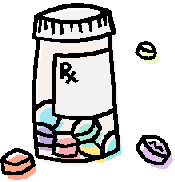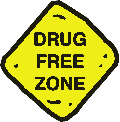

 |
Pharmaceutical diversion reaps large profits for the traffickers, and devastation for the abusers. This eventually affects their friends, families, and their workplace. The diversion of pharmaceutical drugs means that prescription drugs were illegally obtained by a variety of methods and a variety of offenders. This may have been accomplished by deception, or an outright theft of the drugs. Health care professionals face the prescription drug abuser on a daily basis. These drug seekers prey on physicians, pharmacists, dentists, and their staff, in a relentless attempt to obtain pharmaceuticals.
Valuable time is taken away from legitimate patients while health care professionals deal with drug seekers in the clinic, office, and hospital emergency rooms across the United States. These drug seekers see a multitude of health care professionals to obtain more and more of the prescription drugs they need to satisfy their addiction, and/or to sell at high profits on the Street.
Drug-seekers often fake medical conditions or ailments in an effort to obtain pharmaceutical drugs. A variety of physical problems can be convincingly portrayed by drug-seeking patients. These run the gamut from bleeding (often stimulated by the use of anticoagulants-and self-inflicted skin lesions) to gastrointestinal and musculoskeletal disorders. Three of the most common presenting ailments among patients seeking narcotic drugs are renal colic, toothache, and tic douloureux. A patient feigning renal colic complains of pain on the left side of the body (to avoid a diagnosis of appendicitis) and a burning sensation on urination. Patients presenting with toothache often claim to be from another town and to have left at home the medications prescribed by their dentist. Should the physician wish to verify this claim, the telephone number supplied for the hometown dentist often is that of an accomplice. Tic douloureux is a favorite approach among drug-seeking patients because it has no clinical or pathologic signs. Patients complain of recurring, intense episodes of facial pain lasting several seconds to several minutes. Some patients are able to contort their faces to simulate an attack of pain. Although many "conning" tactics seem obvious when described, they can be used convincingly, especially in the midst of a busy medical office or emergency department.
A large majority of these pharmaceuticals are obtained illegally via fraudulent prescriptions. Drug seekers often alter a legitimate prescription by use of a pen with the same color ink as the original prescription. Often times these drug seekers alter the number of refills on the prescription. Other drug seekers forge prescriptions from scratch. The forger begins with either a blank piece of paper or a legitimate prescription blank from a practicing physician. In the former case, the forger stencils a physician's name and address (as well as the telephone number of an accomplice) in black lettering onto a blank page and then uses a photocopier to reduce the sheet to the size of a prescription. To the drug seeker, a blank prescription is like a blank check. Prescription blanks are frequently stolen from emergency departments and in clinics, in part because of the carelessness of the medical staff.
Another common practice is the oral or telephonically communicated prescription. In this particular instance, the drug seeker will telephone his or her prescription directly to the pharmacy while claiming to be either the Doctor or an authorized member of the Doctor's staff. This technique has proven to be quite popular and dramatic increases involving fraudulent telephonically communicated prescriptions have been noted recently. Sometime after placing the call, the drug-seeker will show up at the pharmacy and attempt to pick up the medication.
The most commonly diverted/abused pharmaceutical drugs currently being sought by drug-seekers include: Vicodin, Vicodin ES, Lortab, Lorcet, Lorcet Plus, Norco, Tylenol #3, Tylenol #4, Diazepam, Xanax, Stadol (NS), Valium, Phenergan with Codeine, Tussionex, Oxycontin, Ultram, Ultracet, and Soma.

Drug Addiction Facts
According to the Drug Abuse Warning Network (DAWN), fourteen of the top twenty most abused controlled substances in the United States, are prescription drugs. Benzodiazepines rank highest on the list, and are followed by the opiates or painkillers.
Top 20 Most Abused Drugs
Source: Drug Abuse Warning Network Emergency Room Data, 1999, Table 2.06A.


The Rx symbol has been used by pharmacies for centuries. It's Latin, and the R stands for recipere, which means "to take." The little "x" is not actually an x. It is a diagonal line through the leg of the R. This represents the Roman god for medicine, Jupiter. The proper pronunciation of the word is "ar-ex".

 The Drug Enforcement Administration (DEA)-Diversion Control Program
The Drug Enforcement Administration (DEA)-Diversion Control Program NADDI-National Association of Drug Diversion Investigators, Inc.
NADDI-National Association of Drug Diversion Investigators, Inc. Pharmaceutical Diversion Education-Sgt. John Burke (Warren County Ohio Drug Task Force)
Pharmaceutical Diversion Education-Sgt. John Burke (Warren County Ohio Drug Task Force) Prescription Drug Addiction.com/-A resource for individuals and families
Prescription Drug Addiction.com/-A resource for individuals and families Prescription Drug Abuse.org-An Online Resource for Abusers and Their Families
Prescription Drug Abuse.org-An Online Resource for Abusers and Their Families Prescription Anonymous-Recovery is possible
Prescription Anonymous-Recovery is possible Pharmacy Times-Practical Information for Today's Pharmacist
Pharmacy Times-Practical Information for Today's Pharmacist American Society of Addiction Medicine-Physicians Dedicated to the Field of Addiction Medicine
American Society of Addiction Medicine-Physicians Dedicated to the Field of Addiction Medicine

 |
|
RxList - The Internet Drug Index
|
|
|

 For Additional Drug Information--CLICK HERE!
For Additional Drug Information--CLICK HERE! 

